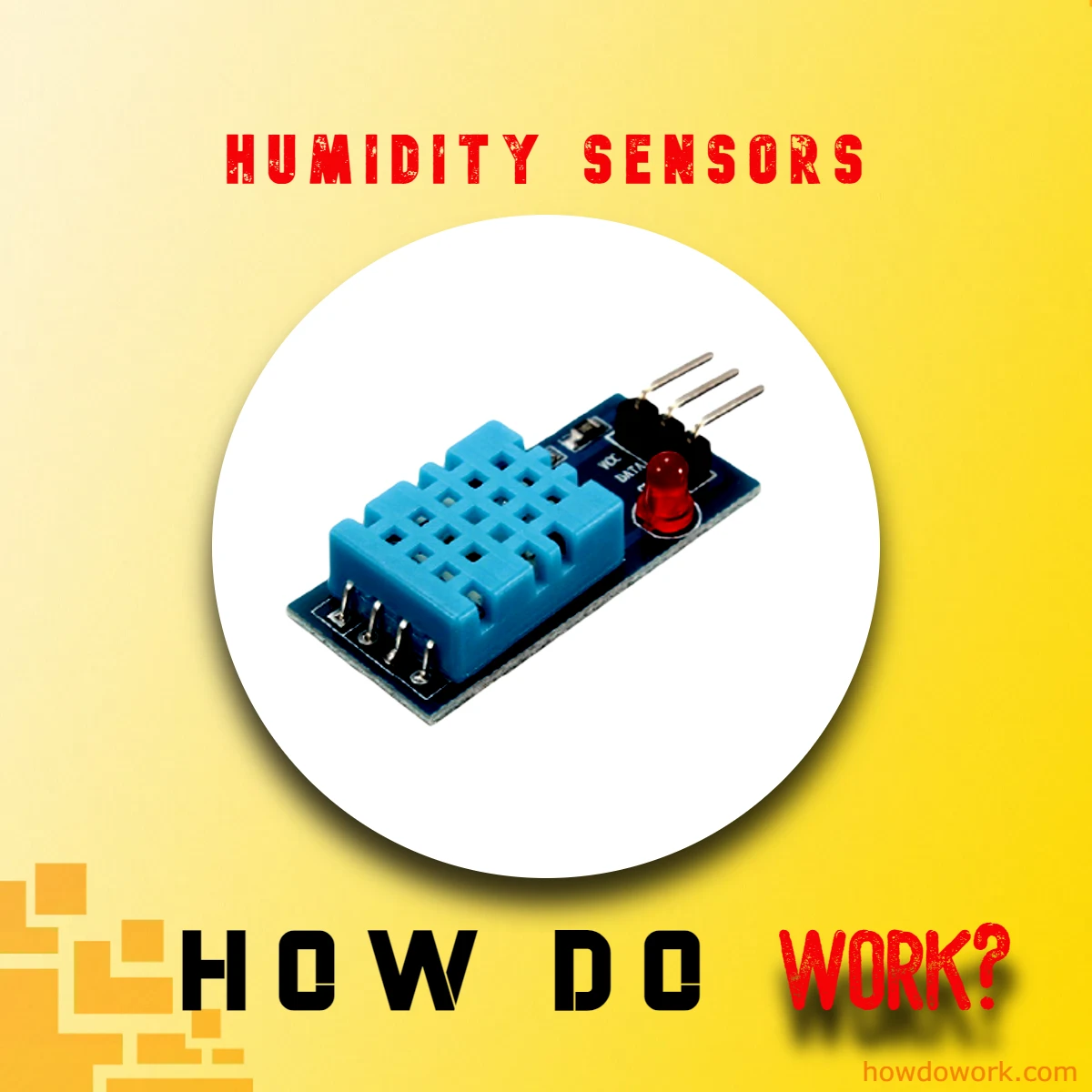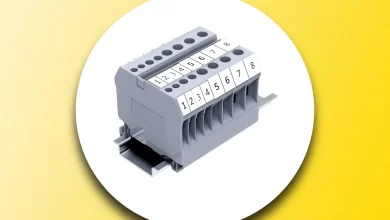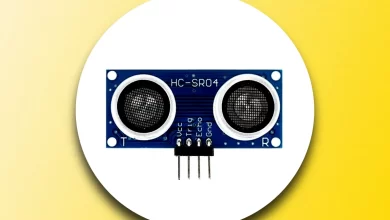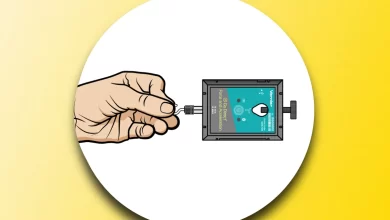
Humidity sensors work by utilizing various principles to measure the amount of moisture in the air. One common type, capacitive humidity sensors, operates by detecting changes in electrical capacitance due to moisture absorption by a dielectric material. Resistive humidity sensors, on the other hand, rely on alterations in electrical resistance as a moisture-absorbent material interacts with water vapor. Thermal conductivity humidity sensors measure humidity by monitoring shifts in the thermal conductivity of air caused by changes in moisture content. Gravimetric humidity sensors weigh a moisture-absorbing material to determine humidity levels based on its change in weight. Lastly, dew point sensors calculate humidity by pinpointing the temperature at which air becomes saturated and condensation forms. Each type of humidity sensor offers unique advantages and is applied in various contexts, from weather monitoring to industrial processes.
| Humidity Sensor Type | Working Principle | Accuracy | Response Time | Applications |
|---|---|---|---|---|
| Capacitive Humidity Sensors | Measure humidity through changes in capacitance due to moisture absorption by a dielectric material between conductive plates. | High accuracy with low hysteresis. | Rapid response to humidity changes. | HVAC systems, weather stations, cleanrooms, consumer electronics. |
| Resistive Humidity Sensors | Utilize changes in electrical resistance of a moisture-absorbent material to measure humidity. | Good accuracy but may require periodic calibration. | Response time can vary but generally slower than capacitive sensors. | Greenhouses, meteorology, food processing, home hygrometers. |
| Thermal Conductivity Humidity Sensors | Measure humidity by detecting changes in the thermal conductivity of air due to moisture content. | High accuracy and stability. | Typically slower response compared to capacitive sensors. | HVAC systems, data centers, pharmaceutical manufacturing. |
| Gravimetric Humidity Sensors | Determine humidity by measuring the change in weight of a material as it absorbs moisture from the air. | Very high accuracy but often used in laboratory settings. | Response time can be slower due to the need for the material to absorb moisture. | Laboratory research, calibration of other sensors. |
| Dew Point Sensors | Calculate humidity by determining the temperature at which air becomes saturated and dew forms. | Highly accurate, especially for low humidity conditions. | Rapid response time. | Refrigeration, HVAC systems, meteorology, industrial drying processes. |
Contents
- What are the humidity sensors work?
- The Basics of Humidity
- Types of Humidity Sensors
- The Advantages of Using Humidity Sensors
- How to Choose the Right Humidity Sensor
- Humidity Sensors in Everyday Life
- Future Trends in Humidity Sensing
- Why do humidity sensors fail?
- What to look out for in a failing humidity sensors?
- FAQs
What are the humidity sensors work?
In the realm of environmental monitoring and precision control systems, the enigmatic world of humidity sensors unfolds with a blend of technology and scientific intricacy. These unassuming devices, often tucked away from the limelight, play a pivotal role in our daily lives, ensuring comfort and efficiency across diverse domains. But what truly sets them apart is their inherent ability to discern the moisture content in the air, unraveling the ever-elusive concept of humidity.
At the core of their operation lies a multitude of innovative mechanisms, each engineered to perfection to decode nature’s humidity levels. From capacitive sensors, with their capacity to measure capacitance changes as moisture is absorbed or released, to resistive sensors, which gauge electrical resistance variations in moisture-absorbing materials, the realm of humidity sensors is an embodiment of precision and sophistication. Thermal conductivity sensors, by detecting shifts in thermal conductivity due to moisture fluctuations, and gravimetric sensors, that meticulously weigh moisture-absorbing materials, are further exemplars of scientific ingenuity. Not to be forgotten are the dew point sensors, which reveal the threshold at which air saturates, offering insights into atmospheric moisture. In the quest for superior environmental control, these sensors stand as unspoken guardians, unraveling the intricate symphony of humidity, one data point at a time.
The Basics of Humidity
Before we dive into the intricacies of humidity sensors, let’s take a moment to understand the concept of humidity itself. Humidity refers to the amount of water vapor present in the air, and it is typically expressed as a percentage. It plays a significant role in our daily lives, influencing everything from our comfort indoors to the weather outside. When humidity levels are too high, we often feel uncomfortable due to the increased moisture in the air. Conversely, low humidity can lead to dry skin, respiratory problems, and even damage to wooden furniture.
Now, imagine having the ability to measure and control humidity with precision. This is where humidity sensors come into play. They provide real-time data on humidity levels, allowing us to make informed decisions and take appropriate actions to maintain the desired humidity in a given environment.
Types of Humidity Sensors
Humidity sensors come in various types, each with its unique working principle and applications. Let’s explore some of the most common types of humidity sensors:
1. Capacitive Humidity Sensors
How Capacitive Humidity Sensors Work
Capacitive humidity sensors operate based on the principle of capacitance, which is the ability of a device to store an electrical charge. These sensors consist of a porous dielectric material placed between two conductive plates. The dielectric material absorbs or desorbs water molecules from the surrounding air, depending on the humidity levels.
As moisture in the air increases, the dielectric material absorbs water molecules, leading to a change in the capacitance between the plates. This change in capacitance is directly proportional to the humidity level. The sensor’s electronics measure this capacitance and convert it into a humidity reading.
Applications of Capacitive Humidity Sensors
Capacitive humidity sensors are widely used in consumer electronics, such as weather stations, home thermostats, and hygrometers. They are also employed in industrial settings to monitor and control humidity in manufacturing processes, storage facilities, and cleanrooms.
2. Resistive Humidity Sensors
How Resistive Humidity Sensors Work
Resistive humidity sensors, also known as hygrometers, rely on changes in electrical resistance to measure humidity. These sensors consist of a moisture-absorbent material (typically a polymer) that is connected to an electrical circuit.
When humidity levels increase, the moisture-absorbent material absorbs water vapor, causing it to expand. This expansion, in turn, leads to a change in the material’s electrical resistance. By measuring this resistance change, the sensor can determine the humidity level.
Applications of Resistive Humidity Sensors
Resistive humidity sensors find applications in various fields, including meteorology, agriculture, and food processing. They are often used in weather stations to measure relative humidity, in greenhouses to control plant environments, and in the food industry to monitor moisture levels in products.
3. Thermal Conductivity Humidity Sensors
How Thermal Conductivity Humidity Sensors Work
Thermal conductivity humidity sensors operate on the principle that the thermal conductivity of air changes with humidity. These sensors consist of two temperature-sensitive elements, one exposed to the ambient air and the other kept in a controlled dry environment.
As moisture in the air increases, the sensor exposed to the ambient air cools down due to the higher thermal conductivity of humid air. In contrast, the reference sensor remains at a constant temperature. The temperature difference between the two sensors is used to calculate the relative humidity.
Applications of Thermal Conductivity Humidity Sensors
Thermal conductivity humidity sensors are commonly used in industrial applications, including HVAC systems, pharmaceutical manufacturing, and data centers. They are valued for their accuracy and reliability in demanding environments.
4. Gravimetric Humidity Sensors
How Gravimetric Humidity Sensors Work
Gravimetric humidity sensors, also known as humidity balance sensors, are based on the fundamental principle of measuring the weight of water vapor absorbed by a substance. These sensors consist of a material that absorbs water vapor from the air.
A small sample of the material is exposed to the air, and the increase in its weight is measured over time as it absorbs moisture. By monitoring the weight change, the sensor can determine the humidity level.
Applications of Gravimetric Humidity Sensors
Gravimetric humidity sensors are primarily used in laboratory and research settings, where high precision and accuracy are required. They are often used for calibrating other types of humidity sensors and for studying the behavior of materials in different humidity conditions.
5. Dew Point Sensors
How Dew Point Sensors Work
Dew point sensors are specialized instruments designed to measure the dew point temperature, which is the temperature at which air becomes saturated with moisture and dew forms. These sensors typically use a combination of temperature and pressure measurements to calculate the dew point.
By knowing the dew point temperature and the ambient temperature, you can determine the relative humidity. Dew point sensors are especially useful in applications where condensation needs to be prevented, such as in refrigeration and HVAC systems.
Applications of Dew Point Sensors
Dew point sensors are commonly used in the field of meteorology, as they provide valuable data for weather forecasting. They are also employed in industries like food production, where controlling humidity is critical to maintaining product quality.
The Advantages of Using Humidity Sensors
Now that we have a good understanding of the different types of humidity sensors and how they work, let’s explore the advantages of using these sensors in various applications.
1. Precision and Accuracy
One of the key advantages of humidity sensors is their ability to provide precise and accurate measurements of humidity levels. This is especially important in industries such as pharmaceuticals, where even slight variations in humidity can affect product quality. Humidity sensors ensure that the desired humidity conditions are consistently maintained.
2. Energy Efficiency
In HVAC (Heating, Ventilation, and Air Conditioning) systems, humidity sensors play a vital role in optimizing energy efficiency. By accurately controlling humidity levels, these sensors help HVAC systems operate more efficiently, reducing energy consumption and lowering utility costs.
3. Comfort and Wellbeing
Humidity sensors are integral to ensuring indoor comfort and wellbeing. In homes, offices, and healthcare facilities, maintaining the right humidity levels can prevent issues like dry skin, respiratory problems, and the spread of airborne illnesses. Humidity sensors work in tandem with HVAC systems to create a comfortable and healthy indoor environment.
4. Process Control
Industries that rely on precise manufacturing processes, such as semiconductor manufacturing and pharmaceutical production, benefit greatly from humidity sensors. These sensors enable tight control over environmental conditions, ensuring product quality and consistency.
5. Data Logging and Analysis
Many humidity sensors are equipped with data logging capabilities, allowing users to record and analyze humidity data over time. This historical data can be valuable for quality control, troubleshooting, and compliance with industry regulations.
How to Choose the Right Humidity Sensor
Selecting the appropriate humidity sensor for your specific application is essential to ensure accurate and reliable measurements. With a variety of sensor types available, it’s important to consider several factors when making your choice:
1. Accuracy Requirements
The level of accuracy you need depends on the application. For critical processes like semiconductor manufacturing or pharmaceutical production, high-precision sensors with low tolerance for error are essential. In contrast, applications like weather forecasting may tolerate slightly lower accuracy.
2. Response Time
Consider how quickly you need humidity data. Some sensors respond rapidly to changes in humidity, making them suitable for applications where real-time monitoring is crucial, such as HVAC systems. Others may have a slower response time but provide stable, long-term measurements suitable for data logging and analysis.
3. Operating Environment
Take into account the environmental conditions in which the sensor will operate. Is it exposed to extreme temperatures, high humidity, or corrosive substances? Ensure that the chosen sensor can withstand these conditions without compromising its performance.
4. Cost
Cost is always a factor in sensor selection. High-precision sensors with advanced features may come at a higher price point, so it’s essential to balance performance requirements with budget constraints.
5. Calibration and Maintenance
Consider the ease of calibration and maintenance. Some sensors require regular calibration to maintain accuracy, while others are more self-sustaining. Choose a sensor that aligns with your maintenance capabilities.
Humidity Sensors in Everyday Life
While humidity sensors are essential components in various industries and scientific applications, they also have a significant impact on our daily lives:
1. Home Comfort
In homes, humidity sensors are often integrated into HVAC systems to help maintain optimal indoor comfort. They ensure that your living space remains at the right humidity level, preventing issues like dry air in the winter or excessive humidity in the summer.
2. Weather Forecasting
Meteorologists rely heavily on humidity sensors to predict weather conditions accurately. By monitoring humidity levels in the atmosphere, forecasters can anticipate the formation of clouds, rainfall, and even severe weather events like hurricanes.
3. Food Preservation
Humidity sensors are crucial in the food industry to control the storage and preservation of perishable goods. They help maintain ideal humidity levels in storage facilities, refrigerators, and freezers, prolonging the shelf life of food products.
4. Health and Medical Devices
In healthcare, humidity sensors are used in medical devices such as respiratory equipment and incubators. They ensure that patients receive the appropriate level of humidity, which is critical for respiratory health and the well-being of premature infants.
5. Environmental Monitoring
Environmental scientists employ humidity sensors to monitor and study climate change, ecological systems, and ecosystems. These sensors help researchers gather data to better understand the impact of humidity on various environments.
Future Trends in Humidity Sensing
As technology continues to advance, humidity sensors are evolving to meet new challenges and opportunities:
1. Miniaturization
Miniaturization of sensors is a prevailing trend, enabling their integration into smaller and portable devices. This trend opens up new possibilities for consumer applications like wearable health monitors and smart home devices.
2. Internet of Things (IoT) Integration
Humidity sensors are increasingly being connected to IoT platforms, allowing for remote monitoring and control. This integration is particularly valuable in industrial settings, where large-scale processes can be managed more efficiently.
3. Energy Efficiency
Efforts to improve energy efficiency are driving the development of sensors that can optimize heating, cooling, and ventilation systems in buildings. This not only reduces energy consumption but also lowers utility costs and reduces environmental impact.
4. Enhanced Sensing Materials
Researchers are exploring new materials for humidity sensors, aiming to improve sensitivity and reduce response times. These advancements will lead to even more accurate and reliable measurements.
5. Environmental Applications
With growing concerns about climate change and its impact on ecosystems, humidity sensors will continue to play a crucial role in environmental monitoring and research. They will help scientists gather data to develop strategies for mitigating the effects of climate change.
Why do humidity sensors fail?
Humidity sensors can fail for several reasons, and understanding these factors is crucial for maintaining their accuracy and reliability. Here are some common reasons why humidity sensors may fail:
- Contamination: Contaminants such as dust, dirt, or chemicals can accumulate on the sensor’s surface, affecting its ability to accurately measure humidity. This contamination can alter the sensor’s response and lead to inaccurate readings.
- Calibration Drift: Over time, humidity sensors may experience calibration drift, causing them to deviate from their original calibration. Regular calibration is essential to ensure accurate measurements, and failure to do so can result in inaccurate readings.
- Physical Damage: Physical damage to the sensor’s components or housing can impair its functionality. This damage may occur due to mishandling, exposure to harsh environmental conditions, or accidents.
- Exposure to Extreme Conditions: Humidity sensors have operating limits, and exposure to extreme humidity levels, temperatures, or other environmental factors beyond their specified range can lead to sensor failure. For example, high humidity levels can cause condensation on the sensor’s surface, while extreme heat or cold can affect its performance.
- Moisture Ingress: Some humidity sensors are sensitive to moisture ingress, which can affect their internal components. This can occur if the sensor is not adequately sealed or if it is exposed to conditions where moisture can penetrate its housing.
- Age and Wear: Like any electronic component, humidity sensors have a finite lifespan. Over time, the sensor’s performance may degrade due to wear and tear on its components, leading to reduced accuracy or failure.
- Electrostatic Discharge (ESD): Electrostatic discharge, often caused by improper handling, can damage the sensitive electronic components of a humidity sensor, rendering it non-functional.
- Chemical Exposure: Exposure to corrosive chemicals or gases can corrode the sensor’s materials and degrade its performance. Sensors used in industrial or laboratory settings should be chosen carefully to withstand such exposures.
- Inadequate Maintenance: Neglecting regular maintenance, including cleaning, calibration, and inspection, can contribute to humidity sensor failure. Routine maintenance is essential to keep sensors operating correctly.
- Manufacturing Defects: In rare cases, humidity sensors may have manufacturing defects that affect their reliability. Such defects can manifest as premature failure or erratic behavior.
To prevent humidity sensor failure, it’s essential to follow proper handling and maintenance procedures, operate them within their specified environmental conditions, and periodically calibrate and inspect the sensors. Additionally, selecting the right type of sensor for the intended application and environment can contribute to their longevity and reliability.
What to look out for in a failing humidity sensors?
Humidity sensors are critical for maintaining comfort, safety, and efficiency in various applications. When these sensors fail or exhibit anomalies, it’s essential to troubleshoot the issues promptly to ensure accurate measurements and prevent disruptions. Here’s a troubleshooting guide to help identify and address problems with failing humidity sensors:
1. Inconsistent Readings:
- Potential Causes: Contamination, sensor drift, or electronic issues.
- Troubleshooting Steps:
- Clean the sensor according to the manufacturer’s guidelines.
- Check for signs of contamination and remove if present.
- If cleaning doesn’t resolve the issue, consider recalibrating the sensor or seeking professional calibration services.
2. Slow Response Time:
- Potential Causes: Sensor component issues, electronic problems, or contamination.
- Troubleshooting Steps:
- Ensure the sensor is not obstructed or covered, allowing proper airflow.
- Check for signs of physical damage.
- If response time remains slow, consider replacing the sensor or contacting the manufacturer for guidance.
3. Drifting Readings:
- Potential Causes: Calibration drift or sensor degradation.
- Troubleshooting Steps:
- Perform regular calibration checks and recalibrate the sensor if necessary.
- If drifting persists, consider replacing the sensor, as it may have reached the end of its operational life.
4. Consistent High or Low Readings:
- Potential Causes: Calibration issues, contamination, or sensor damage.
- Troubleshooting Steps:
- Recalibrate the sensor to ensure accuracy.
- Inspect the sensor for signs of contamination or damage and address as needed.
- If the problem persists, consider replacement.
5. Failure to Stabilize:
- Potential Causes: Sensor or electronic malfunction.
- Troubleshooting Steps:
- Check for obstructions or contamination that may affect sensor stability.
- Ensure proper sensor installation and connections.
- If stabilization issues continue, consult the manufacturer’s troubleshooting guidelines or consider replacement.
6. Abnormal Warm-Up Time:
- Potential Causes: Internal electronic problems.
- Troubleshooting Steps:
- Verify that the sensor is powered correctly and check for loose connections.
- If warm-up issues persist, contact the manufacturer or seek professional assistance.
7. Error Codes or Alarms:
- Potential Causes: Sensor malfunctions or out-of-spec conditions.
- Troubleshooting Steps:
- Refer to the user manual for error code interpretation.
- Address the specific issue as indicated by the error code, which may involve recalibration, cleaning, or replacement.
8. Inaccurate Readings in Known Conditions:
- Potential Causes: Sensor calibration, contamination, or damage.
- Troubleshooting Steps:
- Recalibrate the sensor to match the known conditions.
- Inspect the sensor for contamination or damage.
9. Physical Damage:
- Potential Causes: Accidental damage or environmental stress.
- Troubleshooting Steps:
- Inspect the sensor for visible damage or cracks.
- Replace the sensor or its damaged components, if feasible.
10. Age and Lifespan:
- Potential Causes: Sensor reaching the end of its operational life.
- Troubleshooting Steps: – Consider the sensor’s age and expected lifespan. – If the sensor has been in use for an extended period and issues persist, replacement may be necessary.
Regular maintenance, calibration checks, and timely troubleshooting are essential for the reliable operation of humidity sensors. If issues persist despite troubleshooting efforts, consult the manufacturer’s support or consider seeking assistance from qualified technicians or specialists.
FAQs
A humidity sensor, also known as a hygrometer, is a device that measures the moisture content or relative humidity in the air. It provides valuable data for various applications, from weather forecasting to industrial processes and indoor comfort control.
Humidity sensors work based on different principles, depending on their type. Common methods include capacitive sensing (changes in electrical capacitance), resistive sensing (changes in electrical resistance), thermal conductivity (changes in thermal properties of air), gravimetric sensing (measuring weight changes), and dew point measurement (detecting condensation formation).
The accuracy of humidity sensors varies depending on the type and quality of the sensor. Capacitive humidity sensors generally offer high accuracy, while resistive sensors and thermal conductivity sensors can also provide accurate measurements when calibrated properly. Gravimetric sensors are highly accurate but may be used mainly in controlled environments and for calibration purposes.
Yes, temperature can affect the accuracy of humidity sensors, especially for some types like capacitive and resistive sensors. To mitigate this effect, many humidity sensors are equipped with temperature compensation mechanisms to provide more accurate humidity readings over a range of temperatures.
Humidity sensors find applications in various industries and settings. Common uses include weather monitoring, HVAC systems for indoor climate control, food processing, pharmaceutical manufacturing, and environmental research.
The response time of humidity sensors varies depending on the type and design. Capacitive sensors often have rapid response times, while other types like resistive sensors may have slower response times. The specific response time can also be influenced by the sensor’s size and design.
Yes, humidity sensors can be used in outdoor environments, but the type of sensor and its housing should be selected carefully to withstand varying weather conditions. Some sensors are specifically designed for outdoor use and can provide reliable measurements in such settings.
Many humidity sensors, especially those used in critical applications, may require periodic calibration to maintain their accuracy. Calibration ensures that the sensor readings align with a known standard and can be vital for industries where precision is crucial.
Yes, humidity sensors can be integrated into IoT (Internet of Things) devices and systems, allowing for remote monitoring and control. IoT connectivity enables real-time data collection and analysis, making it valuable for various applications, including smart homes and industrial automation.
Selecting the right humidity sensor depends on factors such as accuracy requirements, response time, operating environment, and budget. It’s essential to consider these factors and choose a sensor that aligns with your specific needs.
Read More:



